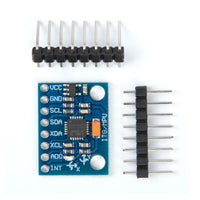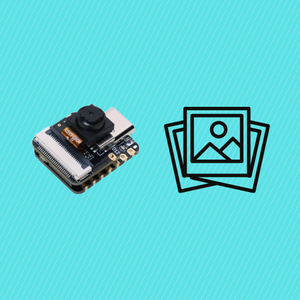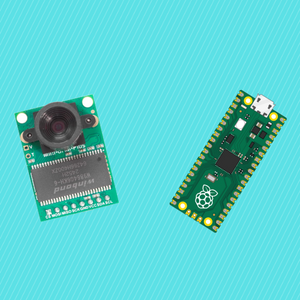Build a Real-Time Azure IoT Sensor Pipeline with Raspberry Pi Pico W + BME280
Why Use Azure IoT?
Azure IoT Hub is a fully managed service that lets you ingest, process, and route device telemetry at scale. Whether you're building a smart building, remote monitoring system, or industrial automation tool, Azure IoT is a powerful backbone for your solution.
But cloud platforms can be confusing. This tutorial gives you a real, fully working end-to-end setup using the Raspberry Pi Pico W and BME280 sensor, pushing live sensor data into Azure using HTTP and viewing it in Azure Data Explorer (ADX).
Components You’ll Need
- Raspberry Pi Pico W
- ShillehTek BME280 Sensor (Temp, Humidity, Pressure)
- Jumper Wires
- Breadboard (optional)
- Azure Account (free tier works)
What You'll Build
- Send sensor data from the Pico W to Azure IoT Hub using HTTP
- Ingest and store it in Azure Data Explorer
- Query the data using Kusto
Step 1: Create an Azure IoT Hub
- Go to the Azure Portal
- Search for IoT Hub → Click Create
- Set:
- Resource Group:
raspberry-pi-group - Region:
East US - Name:
mypicowhub -

- Resource Group:
- Networking: Public access
- Review + Create → Confirm and deploy
Give it time to deploy, can take a while.
Step 2: Register Your Device
- Go to your IoT Hub → Devices → + Add Device
- Device ID:
picow1 - Auth Type: Symmetric Key → Enable auto-generate keys
- Click Save
Step 3: Create a SAS Token
In your terminal with Azure CLI installed, you can download the CLI with their official instructions, once you have the CLI you can run:
az iot hub generate-sas-token --hub-name mypicowhub --device-id picow1 --duration 3600FYI make sure you sign into the Azure CLI first
This will give you the Authorization header to paste in your Pico code.
Step 4: Create Azure Data Explorer Cluster + Database

- Search for Azure Data Explorer Clusters
- Click + Create → Fill:
- Cluster Name:
picocluster - Workload is Dev/test
- Cluster Name:

Once that is done you can add a database to the cluser:


Step 5: Create the Table + Mapping
Open your cluster → Query editor → Run:
.create table iotdata (
deviceId: string,
temperature: real,
humidity: real,
pressure: real,
timestamp: datetime
)Then create the JSON mapping:
.create table iotdata ingestion json mapping 'iotmap' '[{"column":"deviceId","path":"$.deviceId"},{"column":"temperature","path":"$.temperature"},{"column":"humidity","path":"$.humidity"},{"column":"timestamp","path":"$.timestamp"}]'
Step 6: Create the IoT Data Connection
- Go to the
picosensorsdatabase → Data connections → Add connection - Choose IoT Hub:
- IoT Hub:
mypicowhub - Table:
iotdata - Format:
JSON - Mapping:
iotmap
- IoT Hub:
All details are shown here (see image):

Step 7: Wire Up Your Pico W + BME280
- BME280 VCC → Pico 3.3V
- BME280 GND → Pico GND
- BME280 SDA → GP0
- BME280 SCL → GP1

Step 8: Final MicroPython Code
BME280 Library Code here:
Upload this to your Raspberry Pi Pico W:
import network
import time
import urequests
import json
from machine import Pin, I2C
import bme280
WIFI_SSID = 'SMA'
WIFI_PASS = 'mmmyellow'
IOTHUB_NAME = 'mypicowhub'
DEVICE_ID = 'picow1'
HEADERS = {
'Authorization': 'SharedAccessSignature sr=mypicowhub.azure-devices.net%2Fdevices%2Fpicow1&sig=YOUR_SIG_HERE',
'Content-Type': 'application/json'
}
URL = f'https://{IOTHUB_NAME}.azure-devices.net/devices/{DEVICE_ID}/messages/events?api-version=2020-09-30'
def connect_wifi():
wlan = network.WLAN(network.STA_IF)
wlan.active(True)
wlan.connect(WIFI_SSID, WIFI_PASS)
while not wlan.isconnected():
print("Connecting...")
time.sleep(1)
print("WiFi connected:", wlan.ifconfig())
def get_iso_timestamp():
t = time.localtime()
return "{}-{:02d}-{:02d}T{:02d}:{:02d}:{:02d}Z".format(t[0], t[1], t[2], t[3], t[4], t[5])
i2c = I2C(0, sda=Pin(0), scl=Pin(1), freq=400000)
bme = bme280.BME280(i2c=i2c)
def send_to_azure():
temp, pressure, humidity = bme.read_compensated_data()
temp = round(temp / 100, 2)
pressure = round(pressure / 25600, 2)
humidity = round(humidity / 1024, 2)
payload = {
'deviceId': DEVICE_ID,
'temperature': temp,
'humidity': humidity,
'pressure': pressure,
'timestamp': get_iso_timestamp()
}
print("Sending:", payload)
try:
res = urequests.post(URL, headers=HEADERS, json=payload)
print("Response:", res.status_code)
res.close()
except Exception as e:
print("Error:", e)
connect_wifi()
while True:
send_to_azure()
time.sleep(1)
Step 9: Visualize the Data
Run this query in Azure Data Explorer:
iotdata
| where timestamp > ago(10m)
| order by timestamp desc
Or build a chart:
iotdata
| summarize avg(temperature) by bin(timestamp, 1m)
| render timechartConclusion
With just a few lines of MicroPython and a tiny sensor, you’ve built a real cloud pipeline using Azure IoT Hub and ADX. This setup is great for learning, prototyping, or even as a foundation for a scalable commercial project.
If you liked this tutorial, please consider subscribing on YouTube, supporting on BuyMeACoffee, or checking out the Raspberry Pi and Arduino components available at ShillehTek.







